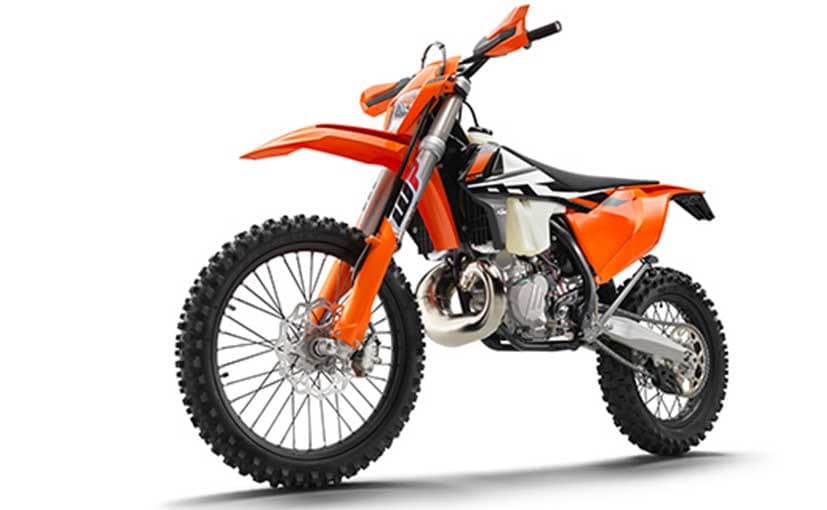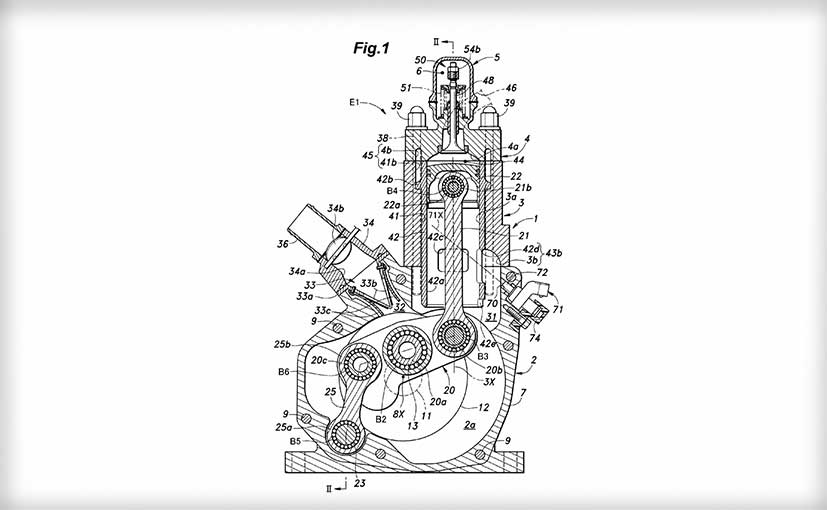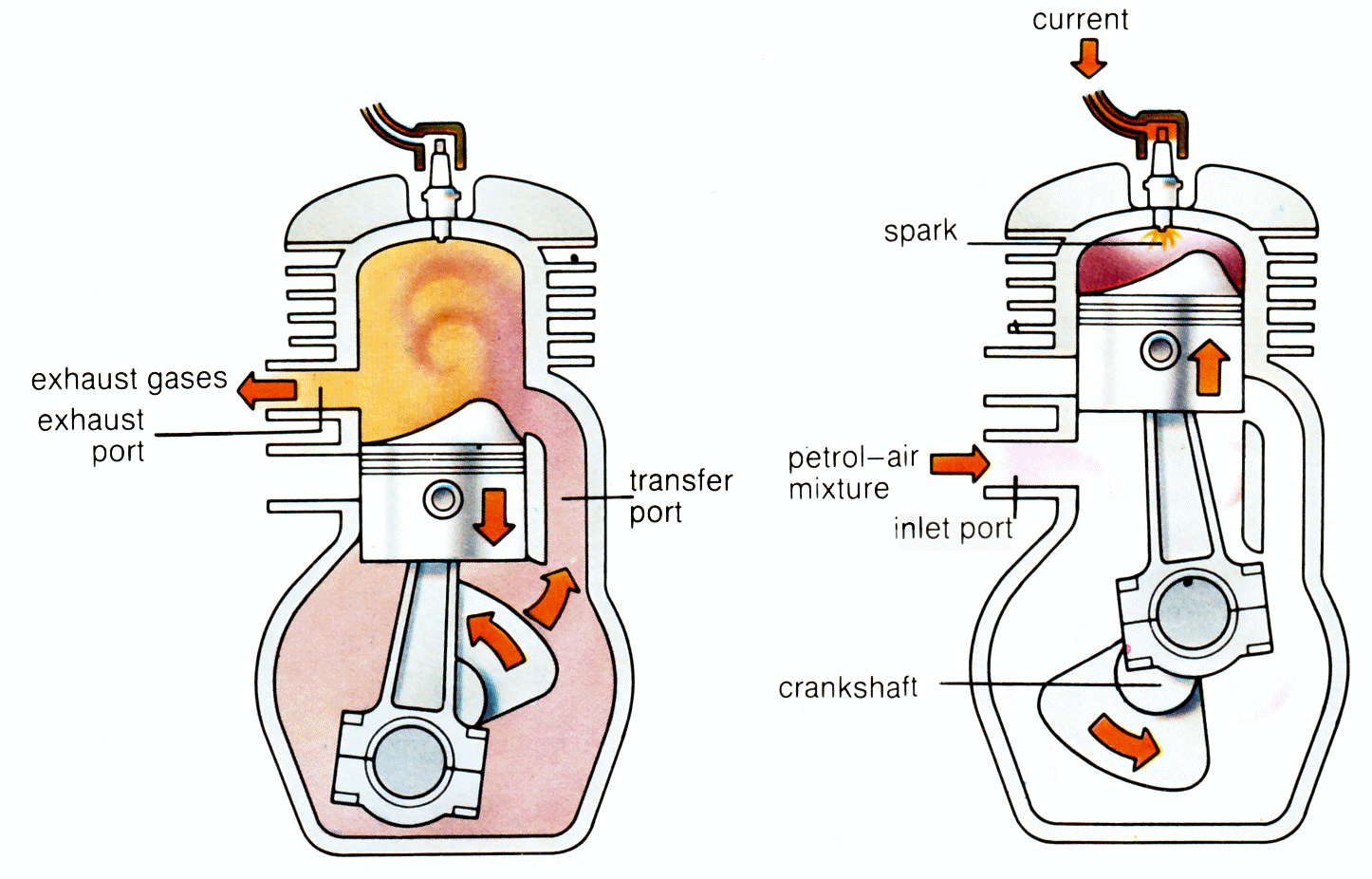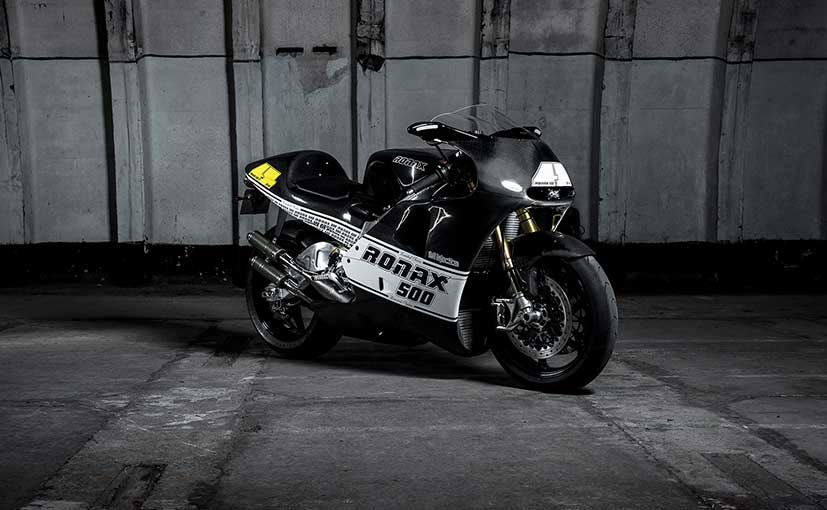Are Two-Stroke Engines Making A Comeback?

Highlights
- KTM will launch 2 dirt bikes with a 2-stroke fuel injected engines in May
- Honda has also filed a patent for 2-stroke fuel injected engine
- 2-stroke engines used mainly in dirt bikes and motocross bikes
Recently KTM and Honda have filed patents for two-stroke engines which are fuel-injected. Like seriously! In fact, KTM is all set to launch two bikes in May, the 250 EXC and the 300 EXC enduro bikes, which will be the first ever 'regular' production bikes to feature a two-stroke fuel-injected engine. Honda, on the other hand is already working on a two-stroke engine with fuel-injection. KTM is calling its two-stroke fuel injection tech as Transfer Port Injection (TPI). These engines, KTM says have done away with pre-mixing oil and fuel as well.
 (KTM 300 EXC with 2-stroke EFI engine)
(KTM 300 EXC with 2-stroke EFI engine)Honda's patent schematic for its fuel-injected two-stroke engine shows that the fuel is injected very close to the top-dead-centre of the cylinder, after the exhaust valve has closed. This leads to better combustion, less amount of unburned fuel and controlled emissions. The fuel injection system is so refined that it sprays a fine atomised of fuel accurately into the combustion chamber along with perfect timing. Again, the combustion of fuel and air is so complete that there are hardly any leftovers, which means less emission. In fact, the fuel itself is used as a cooling element in the cylinder in a bid to maximise efficiency.
 (KTM 2-stroke EFI engine-schematic)
(KTM 2-stroke EFI engine-schematic)Well, Honda says that this technology, even if a couple of years away, can be used to power regular production motorcycles like in the olden days. So, it would not be a far-fetched idea to see the good old two-stroke engine coming back. The company says that this technology will be able to adhere to fuel efficiency and emission norms across the world, but that still remains to be seen. We believe that two-stroke fuel-injected engines will only make their presence felt in dirt bikes and motocross bikes, which need to be light and have tonnes of power.
 (Honda 2-stroke EFI engine-schematic)
(Honda 2-stroke EFI engine-schematic)Most old-timers motorcycle enthusiasts in India would remember the good old two-stroke engines in motorcycles such as the legendary Yamaha pair of the RX 100 and the RD 350 and later, the TVS Suzuki Shogun and the Shaolin. There was something primal, visceral about ripping the tarmac on these bikes with the throttle pinned down. The guttural shriek of the engine and the mad acceleration would put almost any modern 250cc-300cc bike to shame. Such was the power that these two-stroke engines held. And therefore, you still see manufacturers such as KTM, Husqvarna, Sherco and Kawasaki having a decent roster of two-stroke dirt bikes, which are not road-legal. They are meant to be used on trails or for motocross competitions.
 (Two-stroke engine: photo courtesy-schoolworkhelper.net)
(Two-stroke engine: photo courtesy-schoolworkhelper.net)Going back to internal combustion engines 101, a two-stroke engine was one where only two strokes of the piston (up and down movement) were required to generate one revolution of the crankshaft. In comparison, a four-stroke engine needs four strokes which are the intake, compression, combustion and exhaust to generate one revolution of the crankshaft.
 (The Ronax 500 uses a 2-stroke FI engine and is road legal as well. Only 46 units were made and were sold at an eye-watering price of $144,000)
(The Ronax 500 uses a 2-stroke FI engine and is road legal as well. Only 46 units were made and were sold at an eye-watering price of $144,000)Lesser components in a two-stroke engine meant lighter weight and more power-to-weight ratio. But the down-side to these engines was the lack of reliability, more thirst for fuel and a peculiar smoke spewing character, which disregarded each and every emission norm. And that is precisely the reason the RTOs in India stopped registering two-stroke vehicles in 2010. The western countries phased out two-stroke engines much earlier. Even then, there are a few models such as the Ronax 500 and thee Suter MMX 500 which were manufactured in very limited numbers and at astronomical prices. The price for the Ronax 500 was $144,000 while the Suter MMX 500 cost $123,500. Both these bikes feature a fuel-injected two-stroke motor, and are road legal, which could mean that this technology can be adapted to be fitted in regular road-going models as well.



















